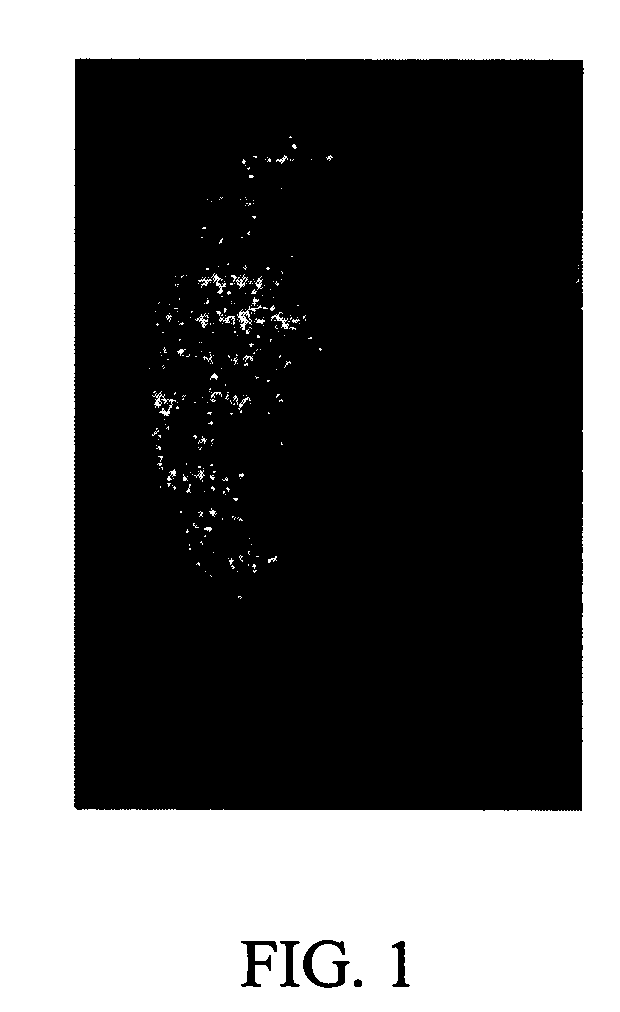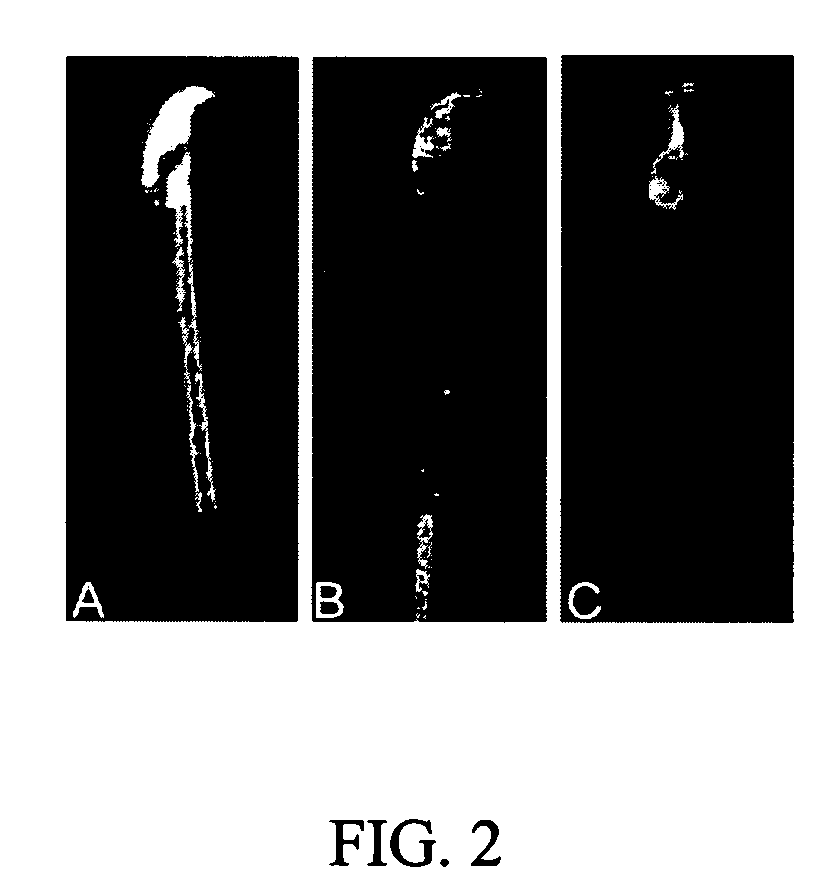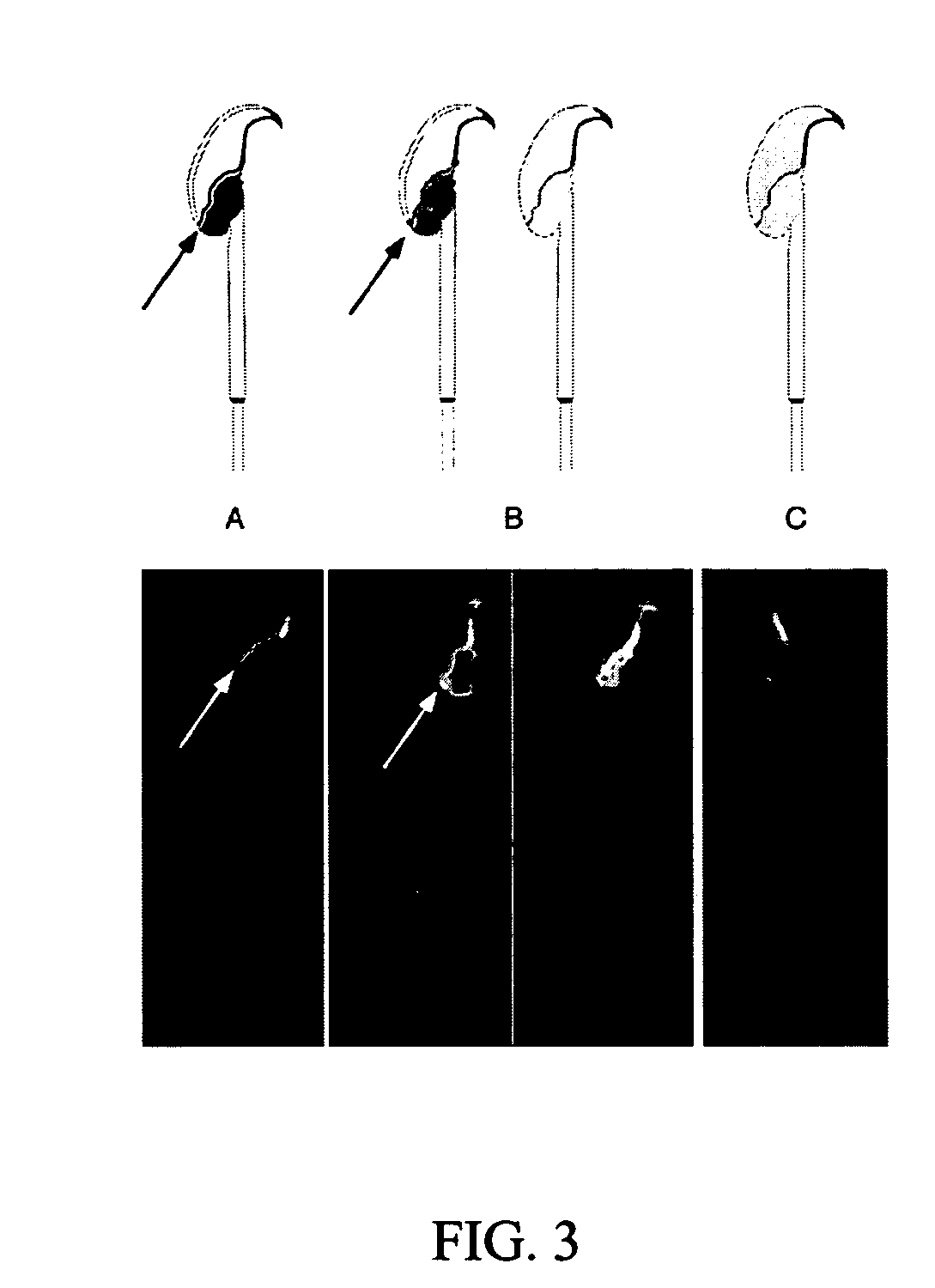Method of determining sperm capacitation
a sperm capacitation and method technology, applied in the field of male fertility, can solve the problems of inability to immediately fertilize an egg, no sensitive and simple markers for capacitation, and ill-suited for clinical purposes
- Summary
- Abstract
- Description
- Claims
- Application Information
AI Technical Summary
Problems solved by technology
Method used
Image
Examples
example 1
[0051]To localize the ganglioside, GM1, in living, motile sperm, 5×106 murine sperm were incubated with 10 μg / ml Cholera toxin b subunit with an Alexa-Fluor fluorescent tag (“CTb,” Molecular Probes, Eugene, Oreg.) in 750 μl of modified Whitten's medium (22 mM HEPES, 1.2 mM MgCl2, 100 mM NaCl, 4.7 mM KCl, 1 mM pyruvic acid, 4.8 mM lactic acid hemi-calcium salt, pH 7.35). Glucose (5.5 mM), NaHCO3 (10 mM ), and (2-hydroxypropyl)-β-cyclodextrin (2-OHCD; 3 mM) were supplemented as needed for 10 minutes at 37° C. in the dark. After washing at 37° C., CTb was seen specifically in the plasma membrane overlying the acrosome (FIG. 1). The fluorescence was detected with a Nikon TE2000 microscope equipped with an OpenLab / Volocity imaging system (Improvision, Lexington, Mass.). The same pattern of fluorescence was seen when sperm were fixed with 4% paraformaldehyde and 0.1% glutaraldehyde.
example 2
[0052]To investigate the existence of lipid rafts in murine sperm, sterols, caveolin-1, and the ganglioside, GM1, were localized by fluorescence methods. Caveolin-1 is often used as a marker for lipid rafts in that it requires interaction with a sterol to attach to a membrane, and often fractionates with lipid raft membrane sub-domains. It should be noted that caveolin cannot be detected in living cells by indirect immunofluorescence because the epitopes recognized by the caveolin antibody are intracellular. Similarly, filipin must be visualized in fixed cells as the autofluorescence is weak and easily quenched, hence movement of the cells during a long exposure time would cause a loss of resolution.
[0053]To localize sterols in murine sperm, we incubated 1×106 sperm with 0.005% filipin (w / v, in dimethyl formamide) (Sigma, St. Louis, Mo.) in 1 ml of modified Whitten's medium (i.e. non-capacitating conditions). Sperm were washed twice by centrifugation and resuspended in medium contai...
example 3
[0054]This example demonstrates the changes in the pattern of GM1 distribution (redistribution) that are observed under conditions which are known to induce or which accompany the process of capacitation. In Example 2, it was demonstrated that the plasma membrane overlying the acrosome was enriched in sterols, whereas the post-acrosomal plasma membrane was enriched in GM1, when the sperm were incubated under non-capacitating conditions and then fixed in 0.004% paraformaldehyde. This segregation was remarkably consistent in non-capacitated sperm. It has been documented that exposure of sperm to sterol acceptors such as 2-hydroxy-propyl cyclodextrin (2-OHCD) or bovine serum albumin (BSA) causes the loss of most FSC from the plasma membrane overlying the acrosome, and allows some FSC to diffuse laterally into the post-acrosomal plasma membrane. This finding is consistent with the loss of sterols causing an increase in membrane fluidity, and promoting lateral diffusion. To investigate t...
PUM
| Property | Measurement | Unit |
|---|---|---|
| pH | aaaaa | aaaaa |
| final concentration | aaaaa | aaaaa |
| frequencies | aaaaa | aaaaa |
Abstract
Description
Claims
Application Information
 Login to View More
Login to View More - R&D
- Intellectual Property
- Life Sciences
- Materials
- Tech Scout
- Unparalleled Data Quality
- Higher Quality Content
- 60% Fewer Hallucinations
Browse by: Latest US Patents, China's latest patents, Technical Efficacy Thesaurus, Application Domain, Technology Topic, Popular Technical Reports.
© 2025 PatSnap. All rights reserved.Legal|Privacy policy|Modern Slavery Act Transparency Statement|Sitemap|About US| Contact US: help@patsnap.com



